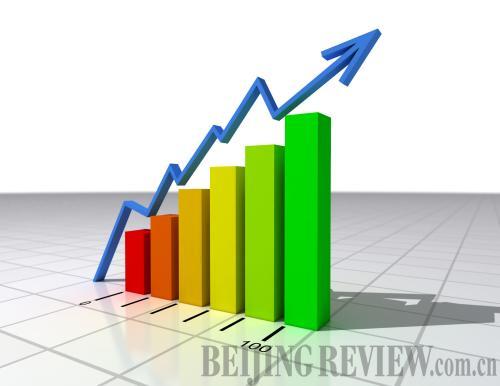| 
YUAN REFORM
Yi Gang, Vice Governor of the People's Bank of China, said on a seminar of the International Monetary Fund and World Bank annual meetings in October that China would continue to further the reform of the formation mechanism of its currency yuan exchange rate to improve its flexibility, but a sharp rise in the value of the currency would damage the Chinese economy. Yi noted that despite some currencies' depreciation against the U.S. dollar during the financial crisis, the yuan kept stable and greatly contributed to the global economic recovery. China further deepened the reform of the yuan exchange rate mechanism in July 2005. The yuan has appreciated by 22 percent against the U.S. dollar since then.
RURAL INTERNET USERS
Farmers will become a "major driving force" in the growth of China's Internet population, which is already the world's biggest with its number exceeding 420 million, according to a blue paper recently released by China's Social Sciences Academic Press. From 2007 to 2009, the number of Internet users in rural areas grew 71.6 percent per year, double the urban rate, which stood at 34.6 percent, read the blue paper. About 100 million people in rural areas had access to Internet as of 2009, and there was plenty of room for increases given Internet coverage in rural areas was considerably less than in urban areas, according to the blue paper.
NO RARE EARTH EMBARGO
Chinese Premier Wen Jiabao told European political and business leaders in a keynote speech at the recent Sixth China-EU Business Summit that China has not, and will not block exports of rare earth. "It is necessary to exercise management and control over the rare earth industry, but there won't be any embargo," he said. In the 1980s and 1990s, rare earth metals from China were exported at low prices due to a lack of proper management and extraction technology, as well as chaos in supervision, according to Wen.
YUAN-DENOMINATED FINANCE
Hong Kong Exchanges and Clearing Ltd. said the company will launch yuan-denominated securities products next year to channel offshore yuan deposits back into the Chinese mainland's equities market. Experts believe the movement will make the yuan a more internationally relevant currency and help stabilize the exchange rate of the Hong Kong dollar. As a pilot program, a "mini-QFII (Qualified Foreign Institutional Investor)" project will be launched to expand yuan business by allowing overseas intuitional investors to invest offshore yuan deposits, within certain quotas, back into mainland capital markets, which means there will be more investment channels for overseas holders to participate in the Chinese mainland's capital market.
GREEN GOAL
Chinese Minister of Industry and Information Technology Li Yizhong told Xinhua News Agency that China is expected to achieve its target of a 20-percent cut in energy use per unit of GDP in the 11th Five-Year Plan (2006-10) period on schedule. Li also forecast energy consumption per unit of industrial value-added output would decline 6 percent this year from a year ago. The year-on-year reductions for the previous four years were 1.98 percent in 2006, 5.46 percent in 2007, 8.43 percent in 2008 and 6.62 percent last year, he said.
RECRUITERS OPTIMISTIC
A report released by Regus Business Tracker, an international employment service provider, says about 62 percent of employers in China plan to increase their payrolls in 2011, compared with 36 percent of companies globally. According to the report, only 17.1 percent of the companies surveyed in China will reduce overheads next year, against to the global average of 45 percent. The fact that companies are looking to hire additional staff is a significant indicator that the mindset of organizations has shifted toward investment in growth through human capital, says the report.
WAGES STILL RISING
School of Economics of Renmin University of China said the country would face a continuous acceleration of market wages in the next five years as the low-end labor market reaches a turning point, bringing about structural changes that have initiated the recent general wage formation mechanism reform. The shift of the labor supply from surplus to deficiency is the root of wage increases, it said. China's current agricultural labor force still stands at up to 3 million, with 40 percent employment. Many surplus laborers stayed in the agriculture sector.
NUMBER CRUNCHING
4 million tons
Surplus of South Africa's maize output in 2010
190
Number of China's civil airports by October 2010
5.3%
Percentage of Tunisia's tourism industry revenue in its national GDP
$191 million
Annual economic loss caused by overused natural resources in Malawi
470
Number of the world's top 500 global companies that have established a presence in China
|